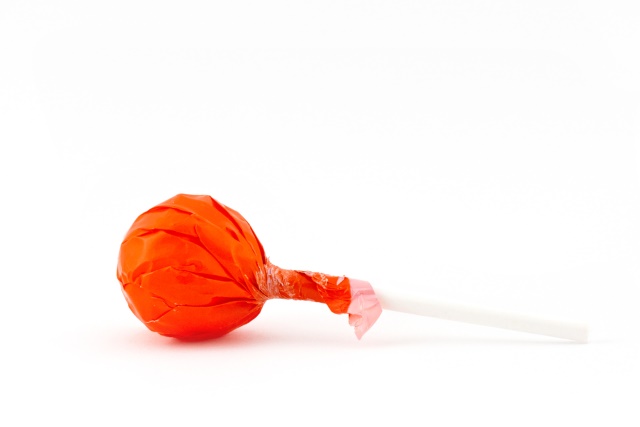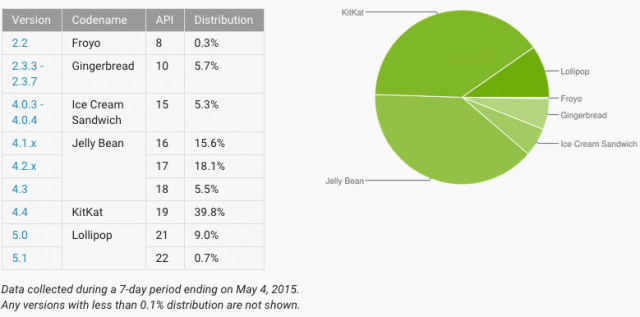Android Lollipop close to 10 percent market share, KitKat still reigns supreme

It has been a while since I last talked about Android distribution numbers. At the time, the first Jelly Bean iteration claimed the top spot, while Gingerbread was still on the podium. Lots of things have since changed, so it is now time to take another look at the state of Android releases.
As always, we start with the latest Android distribution and work our way back to the oldest. As you know, Android 5.1 Lollipop is the newest release available, officially announced two months ago, in early-March. However, it was made available starting a month earlier, since reaching 0.7 percent usage share, based on data collected by Google during a week-long period that ended on May 4. No popular handsets ship with it, and few software upgrades to the second Lollipop incarnation are available today.
The first major handset with Android 5.1 Lollipop to reach store shelves is LG's new G4, which will be released starting later this month. Arguably the most-important Android handset of the year, Samsung's Galaxy S6, comes with Android 5.0 Lollipop out-of-the-box; until this changes, and/or a software upgrade is available, the second Lollipop release will suffer.
Android 5.0 Lollipop is now at 9 percent usage share, aided by the release of major handsets and availability of software upgrades. It is worth noting that Lollipop software upgrades are well underway at major manufacturers like Samsung, which only recently have started to get their older handsets on this Lollipop release. It is worth noting that some devices may skip it and move straight to the second Lollipop incarnation, which offers more stability.
Android 4.4 KitKat is the current ruler of the Android realm, with 39.8 percent usage share. It is, by far, the most popular release, and will likely stay that way for a long time to come. Given its popularity, KitKat may very well be the next Gingerbread, until more software upgrades to newer releases, for popular handsets, are widely available.
In the Jelly Bean family, Android 4.3 is the least-popular release with just 5.5 percent usage share. It is followed by Android 4.1 with 15.6 percent usage share. The most-popular of the bunch is Android 4.2, which is now at 18.1 percent usage share. Needless to say, Jelly Bean is slowly but surely fading away, just like the other older releases I will discuss below, as vendors are embracing newer releases, and software upgrades are long over.
Android 4.0 Ice Cream Sandwich, which came over three years ago, is at 5.3 percent usage share, less than one percentage points away from Android 2.3 Gingerbread, which can be found on 5.7 percent of the Android devices Google monitored. The last one is Android 2.2 Froyo, with a usage share of 0.3 percent. As you may know, distributions with a usage share of less than 0.1 percent are not included in the charts.
With nearly a year between this chart and the last one I discussed, the Android world has changed dramatically. Newer releases prevail, while older distributions no longer matter as much. Developers today can focus on, say, Android 4.4 KitKat and cover nearly half of all Android devices in use. It's a big step forward. However, Google should make it easier for manufacturers to release their latest devices with the latest Android release, and release software upgrades more quickly. We have seen little progress in the latter area.

Photo credit: gourmetphotography / Shutterstock